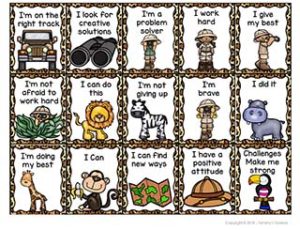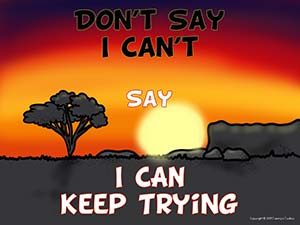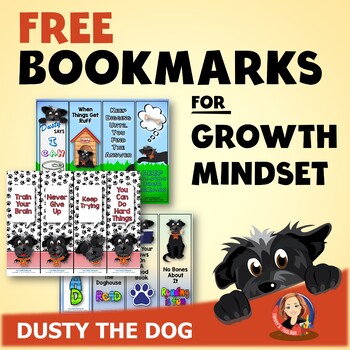Growth Mindset Tips for a New School Year
It’s back-to-school time which is also the perfect time to introduce students to growth mindset. We often take the first few weeks of school to establish rules and routines and build classroom community. Teaching students about growth mindset at the beginning of the year is a great way to create a community of learners who are willing to take risks. They will be able to learn from mistakes and take on challenging work. If you take the time to teach how to have the right mindset now, you will be able to accomplish so much throughout the year.
While growth mindset is a popular term in education, it can often mean different things to different people. In this post, we’ll explore what a growth mindset is and as well as three activities you can use to support students. I also have a few freebies to share with you!
What is a growth mindset?
Growth mindset is a term coined by Carol Dweck, researcher and professor of psychology at Stanford University. Simply put, a person with a growth mindset believes that things like talent and ability can be developed and improved upon. The opposite is a fixed mindset. People with a fixed mindset believe that talent and ability are fixed traits and that you are either born good at something or you’re not.
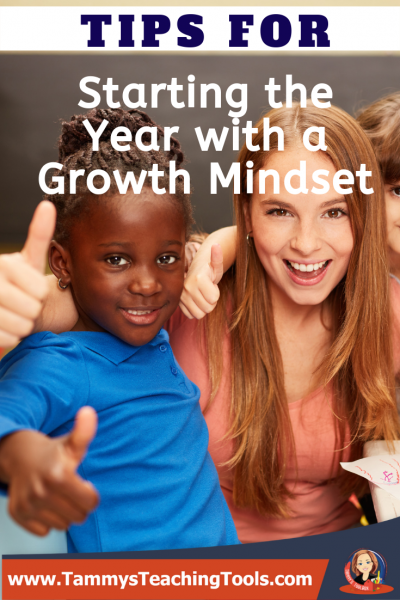
Students with a growth mindset tend to embrace challenges, persevere when faced with an obstacle, see effort as a path to getting better, learn from failure, and are inspired by the success of others. On the other hand, students with a fixed mindset avoid challenges, give up when faced with an obstacle, see effort as pointless, ignore feedback, don’t learn from mistakes, and feel threatened by the success of others.
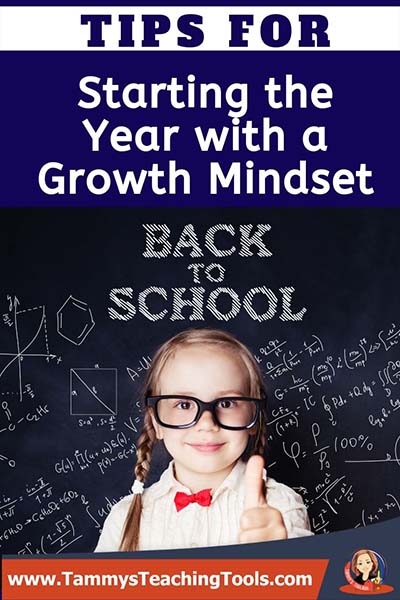 What is a growth mindset?
What is a growth mindset?
Growth mindset is a term coined by Carol Dweck, researcher and professor of psychology at Stanford University. Simply put, a person with a growth mindset believes that things like talent and ability can be developed and improved upon. The opposite is a fixed mindset. People with a fixed mindset believe that talent and ability are fixed traits and that you are either born good at something or you’re not.
Students with a growth mindset tend to embrace challenges, persevere when faced with an obstacle, see effort as a path to getting better, learn from failure, and are inspired by the success of others. On the other hand, students with a fixed mindset avoid challenges, give up when faced with an obstacle, see effort as pointless, ignore feedback, don’t learn from mistakes, and feel threatened by the success of others.
Growth mindset is a spectrum
While these definitions are very straightforward, the truth is that a person doesn’t either have a growth mindset or a fixed mindset. We are a mixture of both. We may find it easier to have a growth mindset in some situations or we may find that certain situations or subjects (like math) can trigger us into fixed mindset thinking.
It’s important for us as teachers to bring an awareness of the mindsets to our students so they can identify when they are stuck in fixed mindset thinking and find ways to move into growth mindset thinking.
Keys to cultivating the right mindset
According to Dweck’s research, anyone can have the right mindset by doing three important things. First, it takes hard work and effort. Second, applying different strategies when the first strategy doesn’t work. And lastly, getting help from others. You can explicitly teach your students these three keys.
Make sure to use the right kind of praise. Praise students on effort, not ability.
► Instead of “Great job,” say “You worked really hard and it shows.”
► Instead of “You got it,” say “I like the way you kept trying different strategies until you got the answer.”
3 Growth mindset activities
Students need to know that learning takes effort and hard work. I tell my students that if something is easy, that means they already know it. Learning is supposed to be hard and it takes time.
1. Dusty the Dog
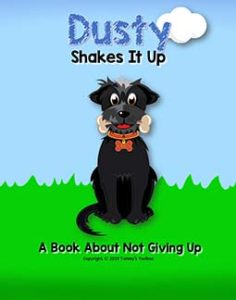
To give students a concrete example of this, I like to introduce them to a character called Dusty the Dog by reading a short book about not giving up called Dusty Shakes It Up. You can get a free mini book by signing up here.
In this book, Dusty struggles to learn something new and in the process learns that when things are hard, it’s important to keep trying, use new strategies, and never give up.
2. Growth mindset vs. fixed mindset language
The positive or negative self-talk that students tell themselves throughout the day can have a big impact on learning and engagement. Research shows that positive affirmations make a difference for students (and adults).
You can present students with various phrases and have them decide which category each phrase belongs in. For the fixed mindset phrases, you can have students rewrite them using growth mindset language.
Here are a few examples:
► “I give up.” . . . “I will try.”
► “I can’t do this.” . . . “This will take hard work and time for me to learn.”
► “I never get it right.” . . . “Mistakes help me learn new things.”
If you’re looking for an interactive tool that can be used with the whole class or individually by students, check out my Growth Mindset Surfing Digital Boom Task Cards featuring Dusty the Dog. This game is also available in a Growth Mindset Workout theme.
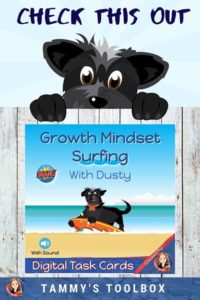
3. Classroom décor and reward tags
Lastly, a great way to support students is to decorate your room with growth mindset posters. Visual reminders around the room will help students when they are stuck in a fixed mindset to shift back into a positive mindset.
I also like to give students reward tags with encouraging words when I see them working hard, helping each other, making mistakes and learning from them, and embracing challenging work. You can pick up my free set of growth mindset reward tags here.
I hope you find these activities helpful. Growth mindset needs to be emphasized and revisited year-round. The beginning of the school year is a great time to dive in and establish the optimal type of learning environment that you want for your students.
Thanks for visiting and here’s one last freebie from Dusty the Dog – Reading and Growth Mindset Bookmarks.
Enjoy and have a great year!




